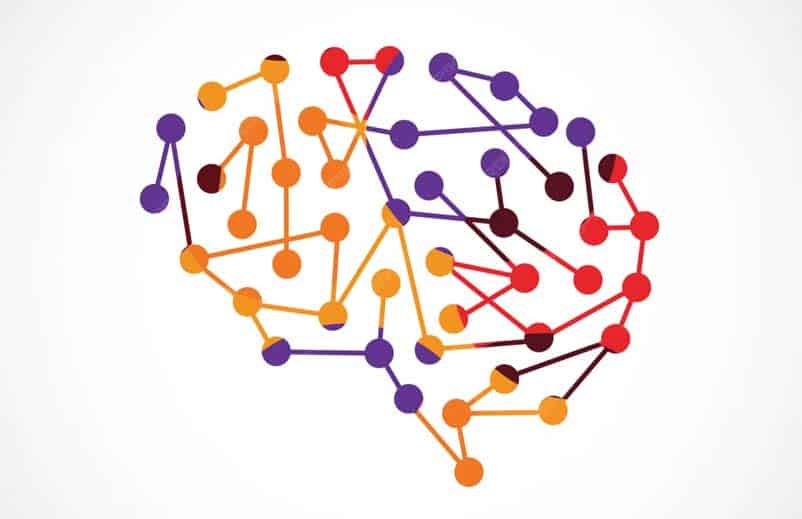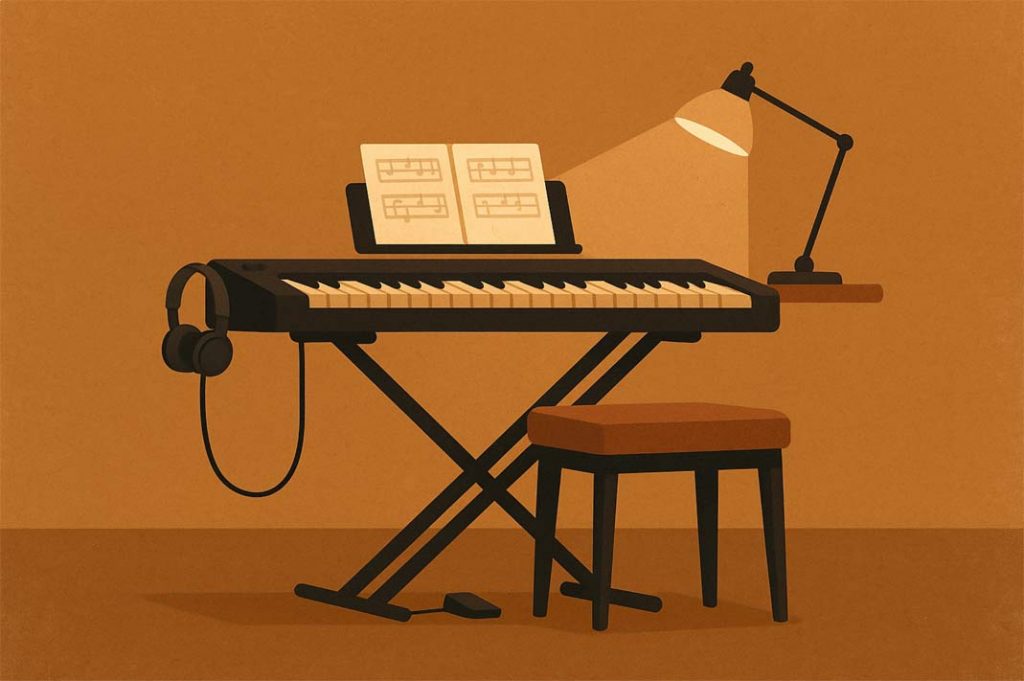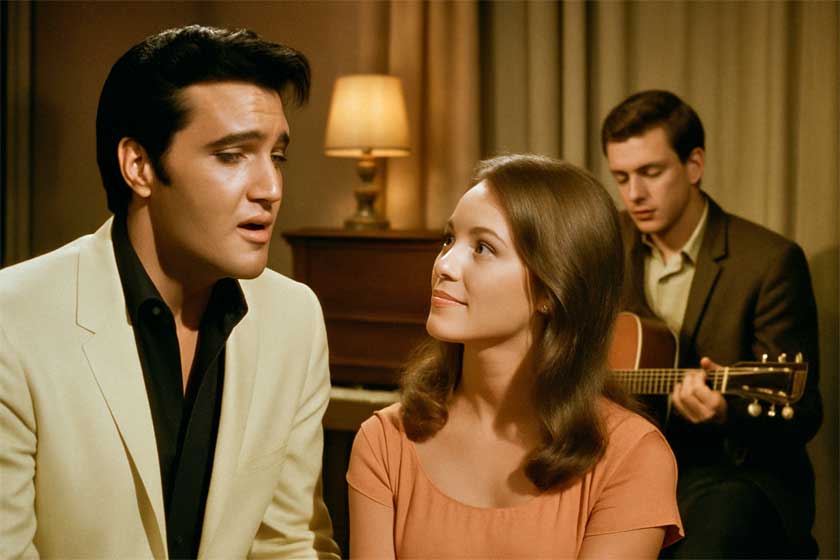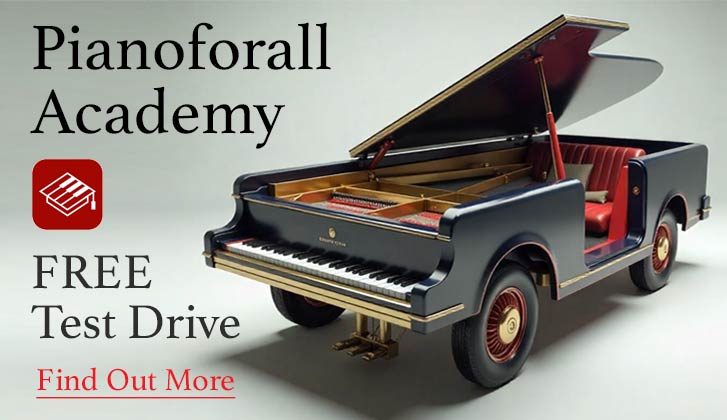Absolutely not! Brains can learn at every age. Many adults do well because they’re patient, can focus for short periods, they know the kind of music they want to play and they often have more time to practice. What usually gets in the way isn’t age—it’s trying to learn the school-style way designed for children (years of drills before any music).
If you’d like to try a simple lesson first, you can open the Free Test Drive and see how it feels in a few minutes:
Why adults learn well
Adults think in patterns. Chords and rhythm make sense because you can hear how they fit into songs you already know. You also don’t need long practice sessions. Ten quiet minutes most days is enough to move forward. The aim isn’t perfection; it’s steady, comfortable progress you can keep up.
How the method works
At Pianoforall we start with playing, not theory. My motto is ‘Learn first – Ask questions later’. You learn basic chord shapes, a simple rhythm, and a bar or two that already sound musical. When something needs explaining, I explain it in plain English. Reading music is added later, when it make more sense because you can already play what is written on the music, so it’s not a barrier at the beginning.
Lessons are short and clear. Your place saves automatically. You can slow things down and repeat each exercise or song until you feel comfortable playing it. I also include a few simple mindfulness prompts—relax the shoulders, breathe out, try the bar again. It keeps the whole thing calm and enjoyable.
If you’d like to see the course player and a few free lessons, the Test Drive shows exactly how it works:
Open the Test Drive →
The science (in plain English)
Adults keep forming new connections in the brain. It may be a little slower than in childhood, but practice quality matters far more than age. Short, regular sessions build reliable patterns; attention and motivation (which adults usually have in good supply) make those patterns stick. That’s why ten focused minutes most days beats an occasional long session. In short: method > age.

What progress looks like
In the first couple of weeks, most adults can play a simple rhythm style progression using both hands (like the way someone strums a rhythm on a guitar). It already sounds like music, not an exercise. After a few more weeks, you’ll add small touches —that make things feel “polished” Over time, common chords rhythms and patterns feel familiar and your hands feel more relaxed and you grow in confidence.
What about classical pieces?
Even Classical pieces are achievable for older learners. The Classics By Ear courses teach well-known pieces one small step at a time using a variety of learning devices – cheat sheets – keyboard diagrams, video, alongside sheet music. We take one bar at a time, with the same calm approach:
- Moonlight Sonata (Beethoven) — repetitive patterns in every bar. See the Moonlight course →
- Erik Satie — Gnossiennes — spacious feel, simple chords. See the Satie course →
- Bach Preludes — patterns that sit nicely under the fingers. See the Bach course →
Prefer popular styles first? You can start with Pianoforall and come back to classical later: Browse all courses →
A simple practice routine
Most people progress with a small, regular habit. Sit comfortably, let your shoulders drop, and take one slow breath out. Pick one bar (or even half a bar). Play it at a speed you can’t get wrong. When it feels easy, pause, then play it once more the same way. Now add the next tiny piece and join them—still slow, still relaxed. Stop while it’s going well. That’s enough for today.
If you like a little structure, try this:
Set up (30 seconds). Sit well, feet flat, shoulders soft. Breathe out once.
Repeat one or two bars (3–4 minutes). Play quietly and slowly, letting the hands feel light and relaxed. If you make a slip, slow down and try again—no drama.
Then add the next bit (2–3 minutes). Add a note or two from the next bar and connect them. Keep the tempo where you can’t make a mistake.
Finish gently (under a minute). Play the whole phrase once, then stop on purpose. A tidy finish teaches your hands that “this is enough.”
This is exactly the kind of focused, repetitive practice that builds skill fastest—small repetitions and low tension. If you’d like the thinking behind it (in plain English), read the short guide here: How to Get Better at Piano Fast.
Tip: if concentration is better at certain times of day, practice then. Even five to ten minutes at your “best” time beats a longer, tired session. (More on picking your best time in this blog post about practising to your ‘chronotype’. Find your best practice time →)
What mature learners think about Pianoforall
Thank you for making an ole man feel good about himself. I am showing up my grandkids who never would dream I could do this – Martin
Please accept my highest respect for possibly the best tutorial of all time – I’m 74 and have seen a few.–Derek
As a 63 year old man I find it entertaining, educational and easily understood. – Bryan
You can read many more here: Student reviews →
Not only can you learn — there are real benefits later in life
Learning an instrument in later life isn’t just possible; it’s good for you. Music practice gives you a gentle workout for attention, memory, and coordination. It also offers something many adults miss: a small, satisfying challenge you can return to every day.
Common benefits people report:
- Clearer focus: short, regular practice sharpens attention and working memory.
- Lower stress: quiet repetition and steady breathing calm the nervous system.
- Better mood and confidence: visible progress (even one bar) lifts the spirits.
- Finger comfort and dexterity: gentle movement helps coordination and hand strength.
- Routine and purpose: ten minutes a day creates a helpful rhythm to the week.
- Connection: music gives you something to share with family and friends.
If you enjoy a mindful approach, the free ebook in the Test Drive (Mindful Notes) shows simple prompts that make practice calmer and more enjoyable.
FAQs
Am I too old to learn piano?
No. Adults learn well. Method beats age—play first, small steps, steady wins.
How long until I sound decent?
Weeks, if you practise 10–15 minutes most days. You’ll sound ‘musical’ in the first session.
Do I need to read music?
Not to start. You’ll add reading when it makes more sense, like how you learn to read as a child only after you’ve learned to talk.
My hands are small or stiff. Will that be a problem?
You’ll use simple shapes with relaxed fingering, and no big stretches at the beginning.
I quit years ago. Is it harder to return?
Returners often progress quickly. Your ears already know how the music should sound.
Do I need a full-size piano?
No. A touch-sensitive 61-key keyboard is fine to begin. A sustain pedal helps later. Check out this post on setting up a keyboard for beginners →
Can I really learn classical by ear?
Absolutely. You can learn Moonlight Sonata, Erik Satie, and Bach Preludes ‘by ear’ – bar by bar, then add reading as you go along. .
Start gently: open the Free Test Drive and try a short lesson. If it feels comfortable, carry on. If not, there’s no pressure.






